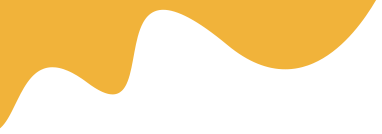


Direct-to-Film (DTF) printing has become a go-to method for creating vibrant, durable designs on fabrics. But one crucial aspect that often confuses beginners is choosing the right color mode: RGB or CMYK. In this article, we'll break down the differences, explain why CMYK is typically the best choice for DTF, and provide practical tips to ensure your prints come out looking professional. Whether you're new to DTF or looking to refine your process, understanding color modes can make a big difference in your final output.
Before diving into their application in DTF printing, let's clarify what RGB and CMYK mean. These are two primary color models used in digital design and printing.
RGB stands for Red, Green, and Blue. This additive color model is based on light and is primarily used for digital displays like computer screens, TVs, and smartphones. In RGB, colors are created by combining different intensities of red, green, and blue light. For example, full intensity of all three produces white, while none produces black.
RGB is ideal for web design, photography, and any content viewed on screens because it can produce a wide range of bright, vivid colors. However, when it comes to printing, RGB has limitations because printers don't use light to create colors—they use ink.
CMYK stands for Cyan, Magenta, Yellow, and Key (Black). This subtractive color model is designed for printing and works by subtracting light from white paper using inks. Colors are formed by layering these four inks in varying percentages.
Unlike RGB, CMYK is tailored for physical prints. It's the standard in the printing industry because it accurately represents how inks mix on paper or, in the case of DTF, on film that transfers to fabric. CMYK can produce a broad spectrum of colors, but its gamut (range of reproducible colors) is narrower than RGB's, especially for very bright or neon shades.
In DTF printing, your design is printed onto a special PET film using inks, then coated with adhesive powder, cured, and heat-pressed onto fabric. The color mode of your digital file directly impacts how the printer interprets and outputs those colors.
Using the wrong color mode can lead to dull prints, color shifts, or unexpected results. For instance, a vibrant RGB design might look washed out when printed in CMYK because some RGB colors can't be replicated with inks. That's why understanding and selecting the appropriate mode is a key part of the DTF process.
In DTF, these differences mean that starting with the right mode can save time and reduce waste from test prints.
For DTF printing, CMYK is the recommended color mode. Here's why:
That said, RGB isn't entirely off-limits. Some designers create initial concepts in RGB for its vibrancy, then convert to CMYK. However, for optimal DTF results, switch to CMYK early in your workflow.
If your design is in RGB, converting it properly is essential. Here's a step-by-step guide using popular software like Adobe Photoshop:
For free alternatives like GIMP:
Always use color profiles specific to your DTF printer and inks for the best conversion. ICC profiles can help match screen colors to printed output.
One frequent error is ignoring color mode altogether, leading to inconsistent prints. Another is over-relying on RGB for its 'pop,' only to be disappointed by the CMYK output. To avoid these, incorporate color checks into your DTF workflow and educate yourself on color theory basics.
Remember, DTF's strength lies in its ability to produce detailed, full-color prints on various fabrics, but this relies on proper color management.
Choosing between RGB and CMYK in DTF printing boils down to understanding your end goal: digital vibrancy vs. print accuracy. While RGB is great for design ideation, CMYK is the powerhouse for actual DTF production. By mastering these color modes, you'll enhance the quality of your prints and streamline your process. If you're just starting with DTF, experiment with both, but always finalize in CMYK for the best results.
With this knowledge, you're better equipped to tackle color challenges in your DTF projects. Happy printing!
CMYK is preferred because DTF printers use CMYK inks, ensuring accurate color reproduction on film and fabric, while RGB is designed for screens and can lead to color shifts when printed.
Read MoreIn software like Photoshop, check under Image > Mode; it will show either RGB Color or CMYK Color. Always confirm before sending to your DTF printer.
Read MoreIt's not recommended as it may cause inaccurate colors; convert to CMYK first to match the printer's ink system and avoid dull or shifted hues in the final print.
Read MoreThe printer or RIP software will automatically convert it to CMYK, but this can result in unexpected color changes, so manual conversion allows for better control and adjustments.
Read MoreYes, programs like Adobe Photoshop, Illustrator, or free options like GIMP offer easy conversion tools, and using ICC profiles specific to your DTF setup improves accuracy.
Read More
